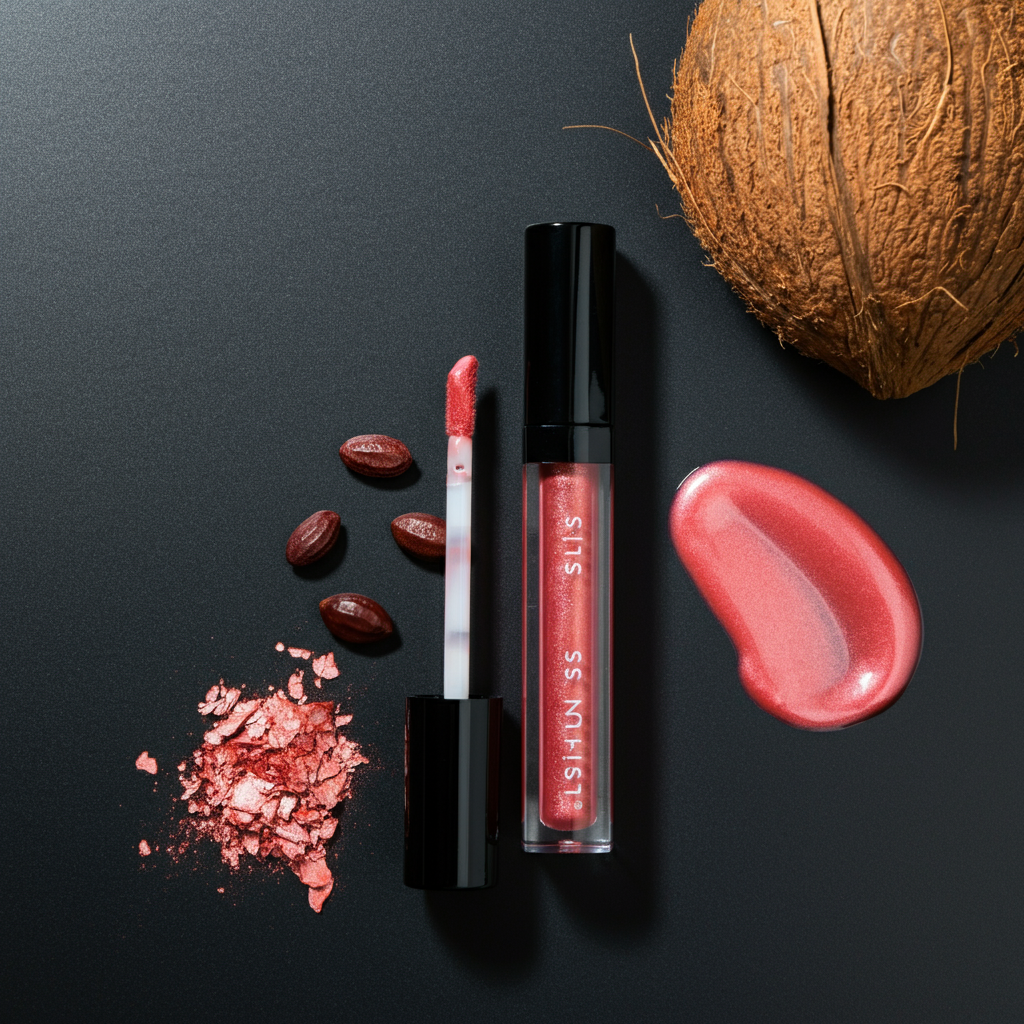Blog
What Is Lip Gloss Made Out Of? A Look Inside the Shine

Ever slicked on your favorite lip gloss and wondered what gives it that perfect shine and feel? You’re not alone. That little tube holds a carefully crafted formula designed to make your lips look and feel amazing. While recipes vary, most lip glosses share a core set of ingredients.
We’re going to pull back the curtain and explore the science behind that beautiful gloss. You’ll learn about the main components, what gives gloss its color and shimmer, and how different ingredients contribute to the final product you love.
The Foundation: Emollients and Waxes
At its heart, lip gloss is a blend of oils and waxes. These ingredients are the base of the formula, responsible for its texture, moisture, and staying power.
Emollients: The Secret to Smoothness
Emollients are the primary ingredients in most lip glosses. They are oils that soften, soothe, and moisturize the lips. They also provide the signature “slip” and glossy finish. Think of them as the liquid foundation of the product.
Common emollients you might see on an ingredient list include:
- Polybutene: This is a popular and important one. It’s a thick, slightly sticky polymer that provides long-lasting shine and helps the gloss adhere to your lips.
- Lanolin: Derived from sheep’s wool, lanolin is an excellent moisturizer that mimics the natural oils in your skin.
- Jojoba Oil: This plant-based oil is very similar to the sebum your skin produces, making it a fantastic, non-greasy moisturizer.
- Coconut Oil & Shea Butter: Known for their deep moisturizing properties, these natural butters are often included to nourish and protect the lips.
- Mineral Oil & Petrolatum: These are highly effective occlusives, meaning they form a protective barrier on the skin to prevent moisture loss.
Waxes: For Structure and Shape
While oils provide the gloss, waxes give the product structure. They help thicken the formula so it isn’t too runny and can be neatly contained in a tube or pot. Waxes also contribute to how long the gloss stays on your lips.
Key waxes used in lip gloss include:
- Beeswax: A natural wax that provides structure and a protective barrier.
- Carnauba Wax: A plant-based wax from a Brazilian palm tree, known for giving products a glossy finish and a higher melting point.
- Candelilla Wax: Another vegan wax, this one helps give the gloss its solid form and smooth application.
So, What Is Lip Gloss Made Out Of Besides the Base?
Beyond the fundamental oils and waxes, brands add other ingredients to create unique colors, effects, and benefits. These are the components that give each lip gloss its distinct personality.
Pigments and Dyes: The Source of Color
This is where the magic of color comes from. Lip gloss can range from completely clear to deeply opaque, all thanks to pigments and dyes.
- Iron Oxides: These are natural mineral pigments that create earthy tones like reds, yellows, and browns. They are widely used in cosmetics for他们的 safety and rich color.
- Titanium Dioxide: This is a white mineral pigment. It’s used to make colors more opaque or to create pastel shades by mixing it with other pigments.
- Carmine: A natural red dye derived from insects, carmine produces vibrant pink and red shades.
- D&C Dyes: These are synthetic colorants approved by regulatory bodies for use in drugs and cosmetics. They offer a vast spectrum of bright, consistent colors that are difficult to achieve with natural pigments alone.
Shimmer and Sparkle: Mica and Pearls
That dazzling sparkle in your favorite gloss comes from light-reflecting particles. These tiny specks catch the light and create a shimmering, frosty, or glittery effect.
- Mica: This is a naturally occurring mineral that is ground into a fine powder. It has a natural shimmer and is the most common ingredient used to create a pearlescent effect. It can be coated with other pigments, like iron oxides, to create a wide range of shimmery colors.
- Silica: Often used in the form of tiny spheres, silica can diffuse light to create a soft-focus effect and can also be used as a base for glitter.
- Synthetic Fluorphlogopite: Also known as synthetic mica, this lab-created alternative provides a cleaner base and more intense sparkle than natural mica.
Flavor, Fragrance, and Extras
To enhance the user experience, many lip glosses contain a few final touches.
- Flavor Oils: Food-grade flavors like vanilla, mint, or fruit extracts make the gloss pleasant to wear.
- Fragrance: Perfumes are added to give the gloss a signature scent.
- Preservatives: Ingredients like tocopherol (Vitamin E) and parabens are essential. They prevent the oils from going rancid and stop bacteria and mold from growing in the product, keeping it safe to use.
- Plumping Agents: Some glosses contain ingredients like cinnamon oil, menthol, or peptides that cause a mild, temporary swelling of the lips for a fuller look.
Your Perfect Gloss Awaits
Understanding what is lip gloss made out of helps you appreciate the complex formula behind that effortless shine. From moisturizing oils and structural waxes to vibrant pigments and dazzling shimmers, each ingredient plays a crucial role. Now, the next time you apply your go-to gloss, you’ll know exactly what you’re putting on your lips.
Ready to find your next favorite? Explore our collection of lip glosses, crafted with high-quality ingredients to give you the perfect combination of shine, color, and comfort.
